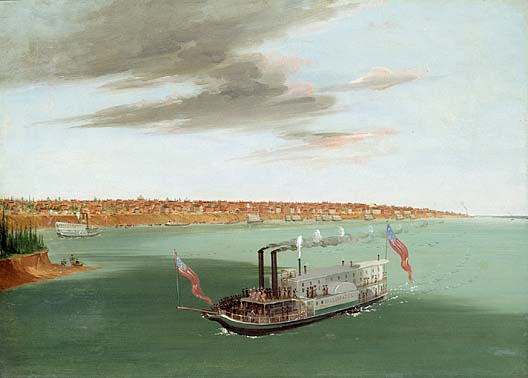
1789 - the Constitution, commerce clause. Promotion of improvements
1865 - 14th amendment.

St. Louis by George Catlin, 1830s.
1871, U.S. Fish Commission
1878, Report on the Arid Regions
 |
Commerce and the Public Trust | |
| Recurrent rivalry in the coastal zone | ||
|
||
|
||
 |
||
St. Louis by George Catlin, 1830s. |
1870, Lake Merritt estuary refuge 1871, U.S. Fish Commission 1878, Report on the Arid Regions |
|
The Connecticut River: runs through several states, so who should have jurisdiction?
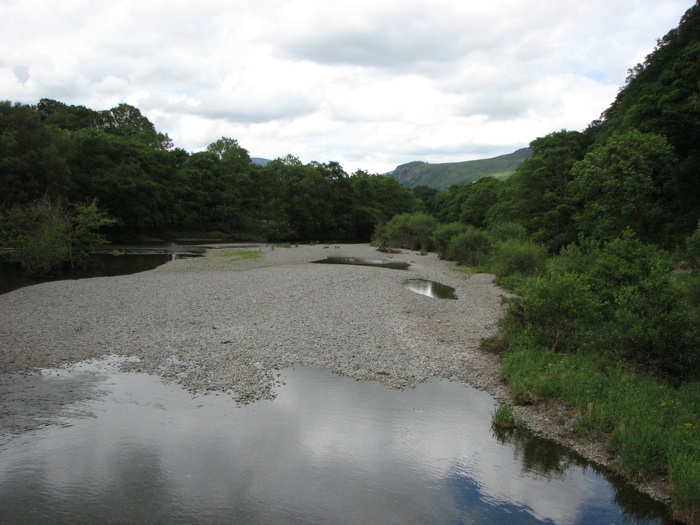
But Marsh first understood rivers, the fish they nourished, and the damages inflicted on the watershed by settlements that destroyed rivers.
Need of restoration of disturbed harmonies with geographical regeneration:
preservation, flood control, timber protection, sanitary engineering, agricultural experimentation, irrigation, city planning
fish and bird protection
fish and wildlife refuges
A new comprehension of rivers and fisheries from the 1850s became the basis of a new "awareness."
Personal changes in fashions and tastes together with scientific discoveries altered prevailing attitudes "to the American landscape"
"During this period [1870s] three significant events influenced the eventual formulation of a estuarine preservation ideal."
Marshes of the Ocean Shore, pp. 62-63.
John Wesley Powell: "his adaptation of land and water laws, technology, and institutions to the dry, drought-prone West. . . . influenced subsequent reclamation policies."
p. 63.
"Protect" … natural resources "from depletion"
"The earliest comprehensive land-use policy for the west."
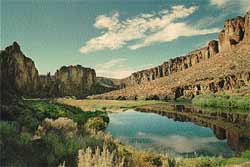
"John Wesley Powell's 1878 publication of a land-use plan for the desert plateau."
"provided for comprehensive land surveys and land-use planning, and professed a political faith in communal water. . . . Powell's bold ideas for the settlement of the arid lands also rested partially on calculations of human utility."
p. 64.
| The enigma of western lands in the arid regions | |
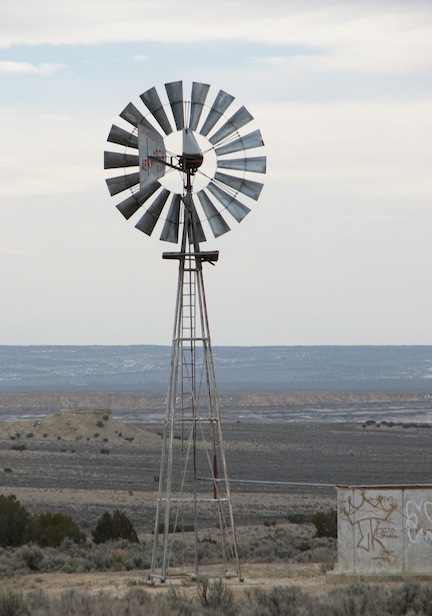 |
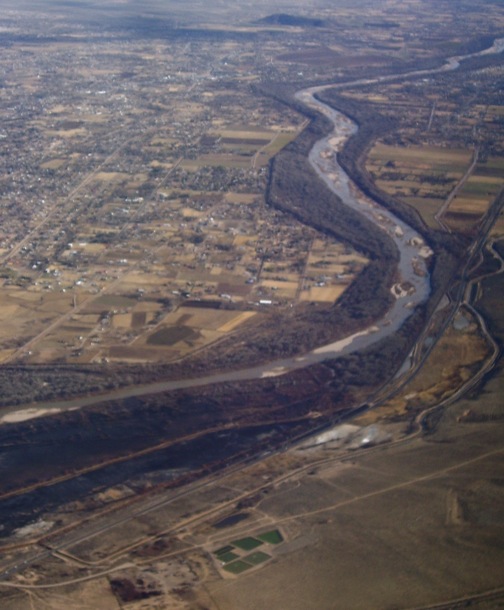 |
| Water is more precious than gold west of Missouri. | Rio Grande in New Mexico. |
Land Realism & drought-prone West
realistic because you cannot farm west of the line running north and south along the Texas and Oklahoma panhandles because there is too little dependable rainfall to sustain crops year after year.
Powell pointed out that every seven to eleven years there occurs a prolonged drought on the Great Plains, the High Plains, and the parched arid plateau of the western territories including Montana,Wyoming, Nevada, Colorado,Utah, Arizona, New Mexico, and even parts of Nebraska, Kansas, Oregon, Washington and Texas.
Because of the lack of reliable water supplies for crops, orchards and grazing Powell knew that only common ownership of water reserves would sustain agrarian settlements on the high frontier, so he proposed:
"publicly supported irrigation"
"Powell's view of utility, . . . was based on organic values and an appreciation for the limits imposed on social and economic institutions by environmental forces."
p. 64.
"Lands reserved for the purposes of public recreation or contemplation were part of the traditional preservationist movement, whereas lands retained for irrigation surveys, reservoir construction, timber reserves, or reclamation were novel federal examples of a utilitarian tradition based on overall concern over future supplies and demands."
Ibid.
The contrast in preservation and the utilitarian approaches and reclamation is clearly utilitarian or the useful engagement of technology to improve the land for farming
"Lands reserved for the purposes of public recreation or contemplation were part of a traditional preservationist movement. . . "
Hefty David Thoreau
 Defining Oikos --the household-- and "ecology"
Defining Oikos --the household-- and "ecology"
"the relations of organisms to the surrounding outer world,"
Seeing he connections from humans "to the organic and inorganic condition of existence."
narrower economic approached thrived in
focused practices:
p. 65.
Addison Verrill's three conditions based on salinity: marine, brackish, & fresh water.
"Tidelands were held in trust by the states in order to further the public rights of fishing, hunting, and navigation."
p. 67.
Now the extent of the tidal marshes was a discovery of necessity to scour silt from navigation channels a massive quantity of water -- held at high tide in the upland marshes would be needed to flush the system downstream to remove the silt.
pp. 67-68.
P. 68.
That is the deliberate removal of and prohibiting a return of water flow upon land beside rivers, sloughs, swamps, or bogs was also called drainage.
Chama River, in New Mexico.
Millions of acres were granted to private holders taking the submerged lands from commonly owned wetlands.
Reclamation of this kind in the uplands when accompanied by settlement, timbering and plowed fields "aggravated the siltation of harbors" downstream.
p. 69.
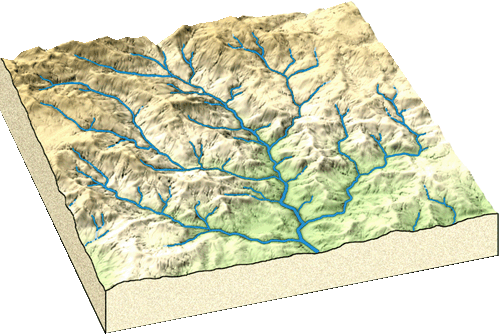
criticized flood protection in the lower Mississippi river valley and delta lands.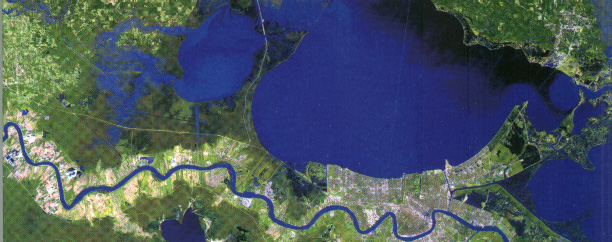
loss of uniform discharge made the river unnavigable at times, siltation, flooding, debris and levee or dike building all made the flow of the river at peak period vulnerable to flooding the very lands being given away for the purpose of building levees and drainage for agricultural reclamation.
p. 70-71.

His call for multi state control of the Mississippi and Ohio Rivers to reverse the damages was not heeded (1853)
p. 72.
Flooding worsened due to levees that confined the flow of the river to the bed and the gravel bed to sudden shifts downstream
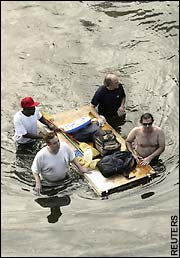
Not isolated incidents, beyond the mastery of states, but a national problem.
Waves of Cholera epidemics initiate metropolitan boards of public health and a call for sanitary engineering.
p. 74.
George Waring – sanitary reform
Frederick Law Olmsted Sr. – parks, public health, drainage and recreational
"instrument of civic rejuvenation"
drainage and sanitation "by public authority"
"Everything has to go somewhere."
pp. 74-76.
sanitary reformers
"The growing problems of river pollution and epidemic outbreaks of typhoid, diptheria, and cholera led to many erroneous suggestions that 'miasma' or swamp gases transmitted these diseases."
p. 77.
| Urban living required changes in the disposal of garbage, waste, and unhealthy pollution. | |
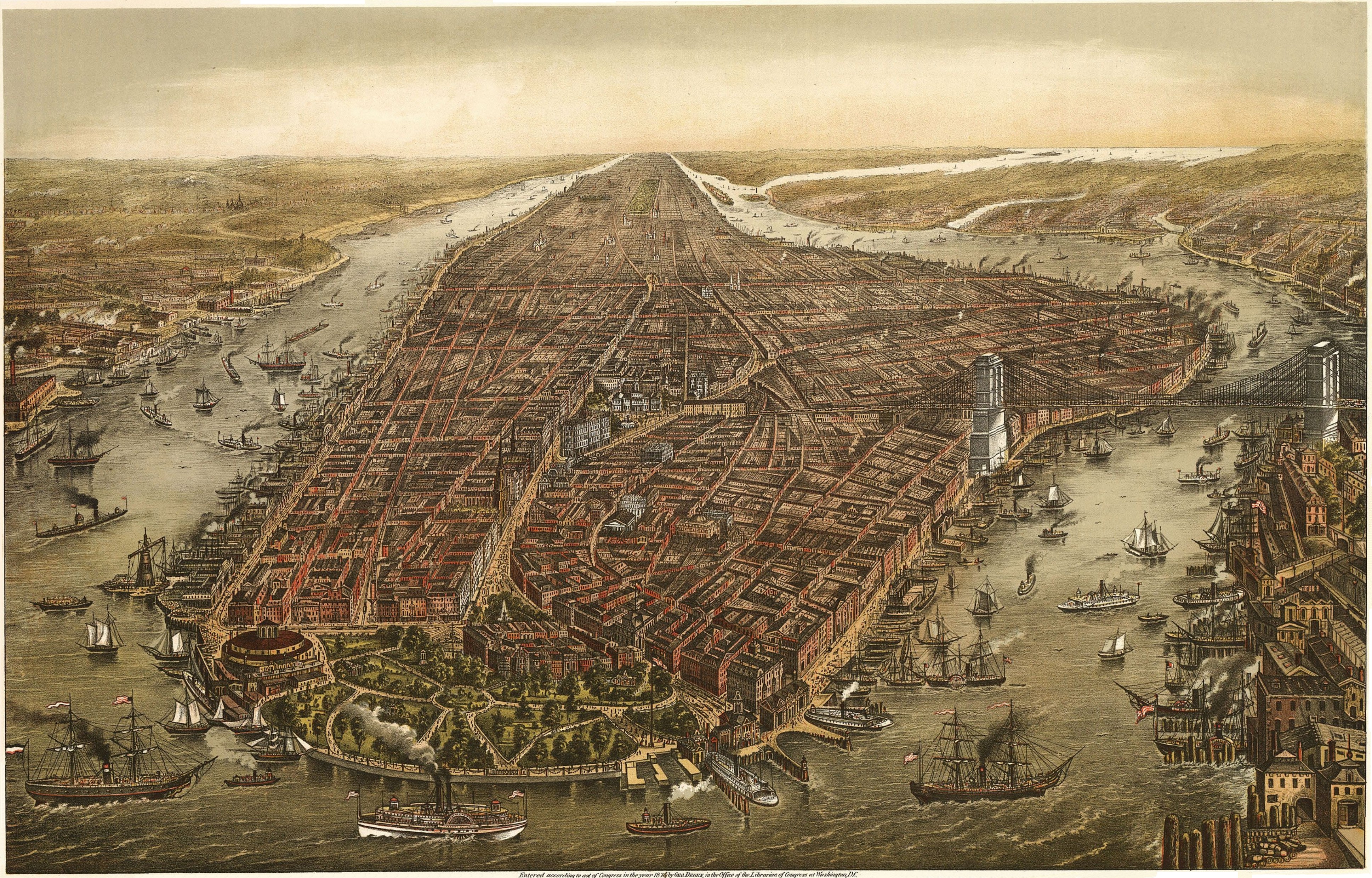 |
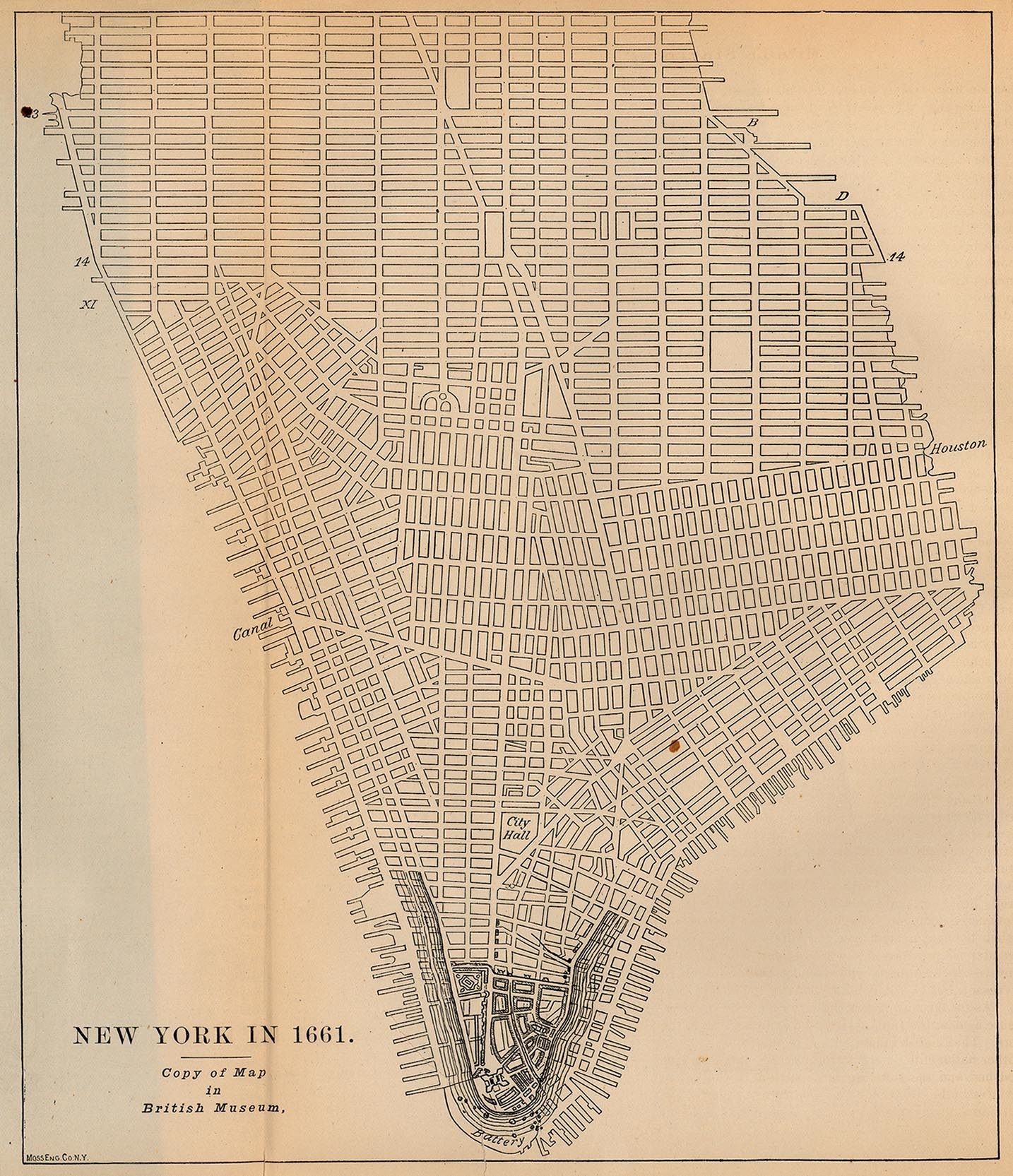 |
| Manhattan in the 1890s | Map of Manhattan comparing 200 years of growth |
pp. 78-81.
"This ideology gave rise to government policies that rejected the preponderant laissez-faire attitudes toward nineteenth century resource use."
p. 81.
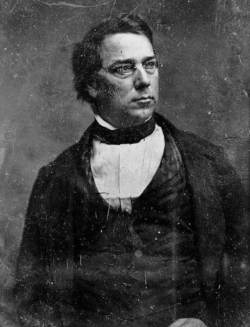
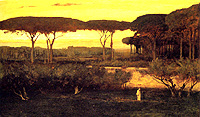
George Perkins Marsh Man and Nature, 1864.
"land legislation, river policies and wildlife conservation"
• parks, fisheries, sanitation, and public health all take on a movement to support institutions and social structures for
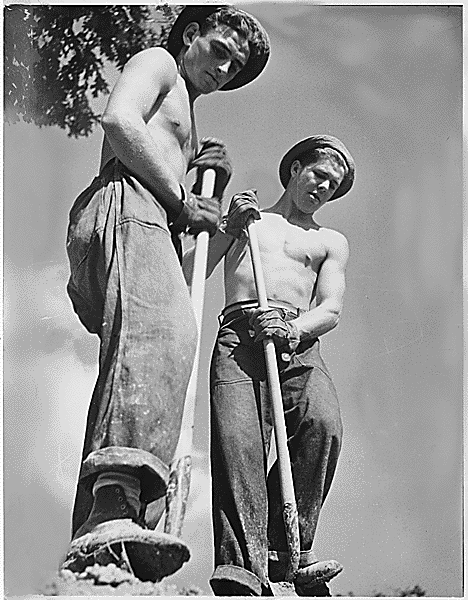
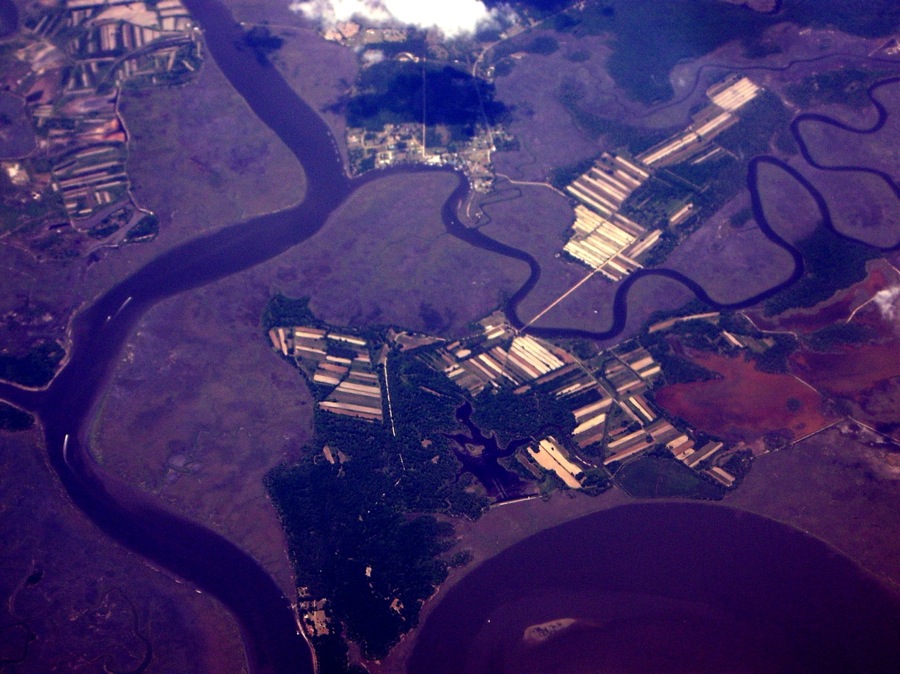
Represent a "substantial shift in national sentiments, legal interpretation, and engineering designs in favor of natural systems."
Marshes of the Ocean Shore, p. 82.
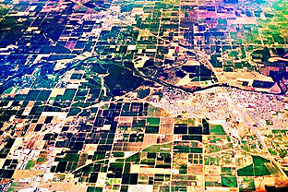 George Perkins Marsh was but one in a half dozen people who when viewed together adopted a profoundly different approach to land and water policies to the then widely accepted laissez faire approaches to altering rivers and forests.
George Perkins Marsh was but one in a half dozen people who when viewed together adopted a profoundly different approach to land and water policies to the then widely accepted laissez faire approaches to altering rivers and forests.
Called later the "fountainhead of the conservation movement," Marsh by promoting landscape renewal was part of a group advocating "land realism."
As the basis of an organic revolt against widespread waste of natural resources due to timber, mining and manufacturing practices, land realism was based on the limitations that climate, terrain, and water imposed on land-use. John Wesley Powell, Frederick Law Olmsted and George Waring understood that whether urban, or arid, or flood conditions dominated a region, that communal responsibility had to be promoted.
As part of a renewed focus on fisheries and rivers, timber and forest reserves, and irrigation in dry lands the "Organic Revolt" that these men – and others like Ruffin and Baird,– led was the foundation of a conservation effort in the 1890s through the 1920s, after their deaths.
Marsh understood that geographical regeneration required an investment in land and resources beyond anything the politicians of the period had envisioned because the idea of giving land away to farmers was a dominant belief that represented a faith in Jeffersonian values of small towns and farms. The ideas were not at all appropriate to the large cities and industrial regions that spread throughout the eastern valleys.
Because:
Conservation of the economic resources of the seas as these are a wetland dependent product requires the preservation of tidal marshes, mud flats, sea grass beds, and river mouths to assure an enduring sustained yield supply of commercial and sport fisheries.
Conservation to keep from harm, loss, or decay, later applied to the reserving of natural resources for economic well-being and security.
Gifford Pinchot, Forester and friend of Theodore Roosevelt; both advocated conservation.
conflicting motives | defining public character of land | seashore | coastal conflicts summary | ecological values | coastal ecology | terms | ideas | summary
More on geographical regeneration
Water as a critical policy matter.
ecologically informative vocabulary